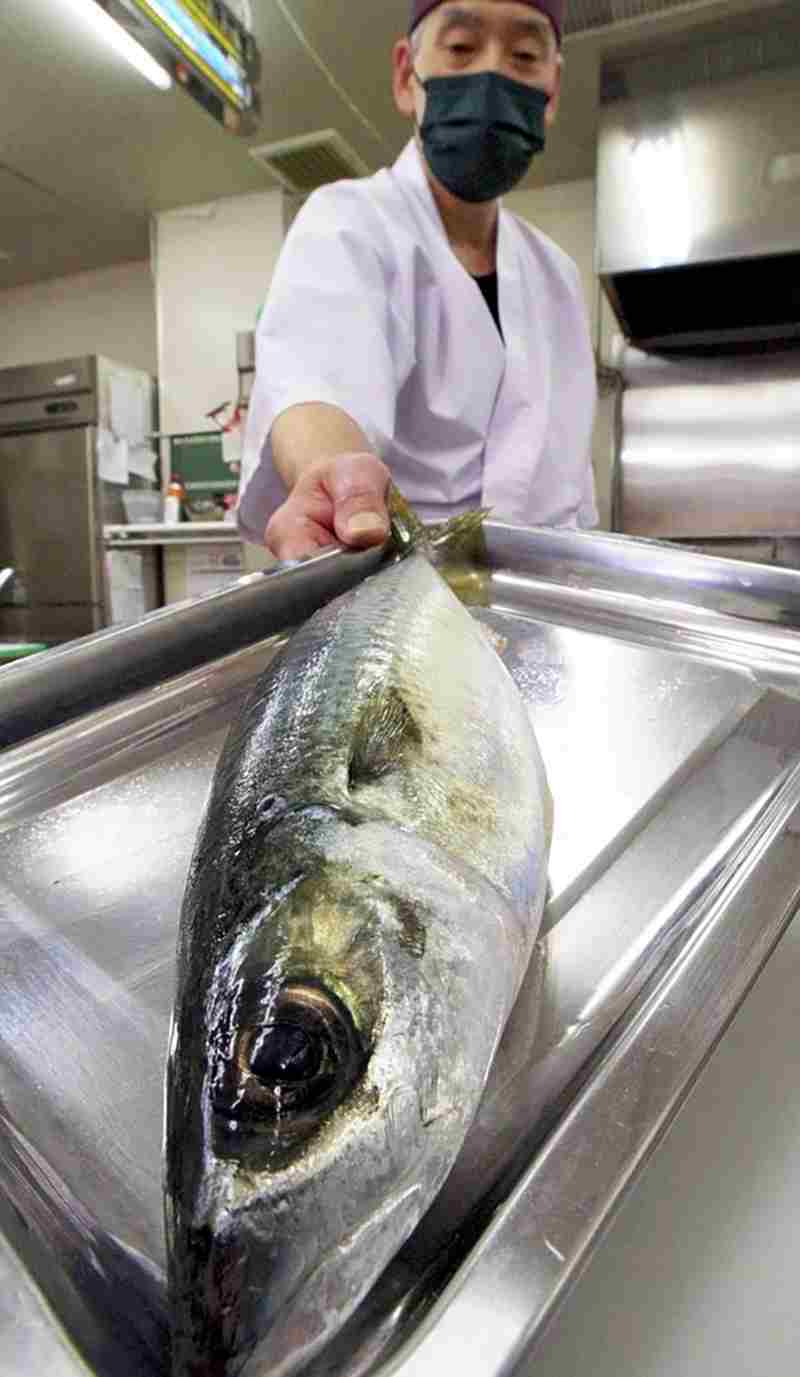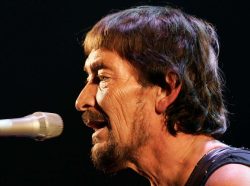
A tipsy mackerel cultivated with food mixed with sake lees
15:44 JST, March 22, 2022
YAMAGUCHI — Sales of mackerel grown with food mixed with sake kasu, or pressed sake lees, will go into full swing in fiscal 2022 starting in April in Yamaguchi Prefecture, one of the nation’s major sake production centers.
Dubbed “tipsy mackerel,” the fish is said to have more flavor than ordinary mackerel. The Yamaguchi prefectural government hopes to promote the product across the country as a new brand of fish.
At the Hajimari no Restaurant Kashima in Abu in the prefecture, a set meal of tipsy mackerel sashimi and grilled tipsy mackerel was offered as a limited menu item through the end of January, and it proved popular.
“Customers were surprised at the good taste and lack of fishy smell,” said Norie Yamamoto, the 68-year-old restaurant manager.
The 2,000 slightly drunk mackerel, which were cultivated on a trial basis by fisheries companies in the prefecture, were sold to restaurants and other facilities in the town last autumn. The fish had sold out by January.
The prefecture is home to many famous sake breweries, such as Asahi Shuzo Co. in Iwakuni, which produces internationally renowned Dassai, and Sumikawa Sake Brewery Inc. in Hagi, the maker of Toyo Bijin, which was highly praised at the 2016 Japan-Russia summit.
On the other hand, the growth of fish in Yamaguchi Prefecture is slower than that of fish in Kyushu and other regions due to the low water temperature of the Sea of Japan in winter. So the scale of fish culturing is small in the prefecture and mackerel farming was rarely carried out.
Given that, an official of the prefectural government’s fisheries promotion division wondered if there was a way for the local fisheries industry to take advantage of the momentum enjoyed by local sake breweries, zeroing in on the large amount of sake lees left when sake is produced. The official then came up with the idea of adding value to small mackerel caught locally in the Sea of Japan by feeding them sake lees.
The prefectural government launched research in fiscal 2019. Initially, sake lees were mixed into food for fish at a 4:6 ratio. The mixture was fed to adult mackerel, but the mackerel spit it out in many cases.
Through trial and error, the researchers found that if sake lees were dissolved in water and mixed into the fish feed at the ratio of 2:8, the fish ate it like their regular food.
When the mackerel were given food containing sake lees for two weeks to a month, the amount of both glutamic acid, which is an umami component, and alanine, a sweet component, increased by about 10%, and the aroma of sake was detected in the fish meat.
“The data clearly shows that these fish taste better than ordinary mackerel,” said Nobuhiko Shiraki, a researcher at the Yamaguchi Prefectural Fisheries Research Center in Nagato.
The prefectural government and other participating parties branded the fish “tipsy mackerel” to put it on the market.
They set three criteria for certifying tipsy mackerel: weighing 500 grams or more; fed with food containing 20% sake lees for at least 15 days before shipment; and shipped within a week after feeding is stopped.
In the next fiscal year, fishery business operators will work together with sake breweries to cultivate 17,000 slightly drunk mackerel and market them.
According to the prefectural sake brewers’ association, sake lees are often used for kasuzuke pickles, but it had been a challenge to find a way to utilize the surplus sake lees with demand for pickled vegetables falling.
“If the sake lees can be used as food for fish, it will become a new way of using sake lees and we are grateful for that,” said Toshiro Yamagata, the chairman of the association.
Hidenori Watanabe of the prefectural fishermen’s association also welcomes the initiative, saying, “We want to use tipsy mackerel to promote fish from the prefecture across the nation.”
According to the Fisheries Agency, the annual consumption of fish and shellfish per capita has continued to decline. In 2011, the figure was 28.5 kilograms, lower than meat at 29.6 kilograms, and fell further to 23.4 kilograms in fiscal 2020.
“If there are more such brand-name fish that make use of distinctive characteristics of each region, that would help raise consumer interest in eating fish,” an official of the agency said.
Related Tags
"Features" POPULAR ARTICLE
-

Sanrio to Open Museum in Yamanashi Pref. Dedicated to Founder, Exhibits Include Hello Kitty, Other Characters
-

Autumn Foliage Surrounds Visitors to Tokyo’s Showa Kinen Park
-

My Daughter No Longer Speaks to Me, But I Want to See Her and My Grandchild
-

Kumamoto: Public Bath Refurbished as Library Where You Can Chat, Take Photos
-

Frozen Vegetables: Demand Rises for Convenient, Tasty Domestic Produce
JN ACCESS RANKING
-

Tokyo Economic Security Forum to Hold Inaugural Meeting Amid Tense Global Environment
-

Keidanren Chairman Yoshinobu Tsutsui Visits Kashiwazaki-Kariwa Nuclear Power Plant; Inspects New Emergency Safety System
-

Imports of Rare Earths from China Facing Delays, May Be Caused by Deterioration of Japan-China Relations
-

University of Tokyo Professor Discusses Japanese Economic Security in Interview Ahead of Forum
-

Japan Pulls out of Vietnam Nuclear Project, Complicating Hanoi’s Power Plans

























